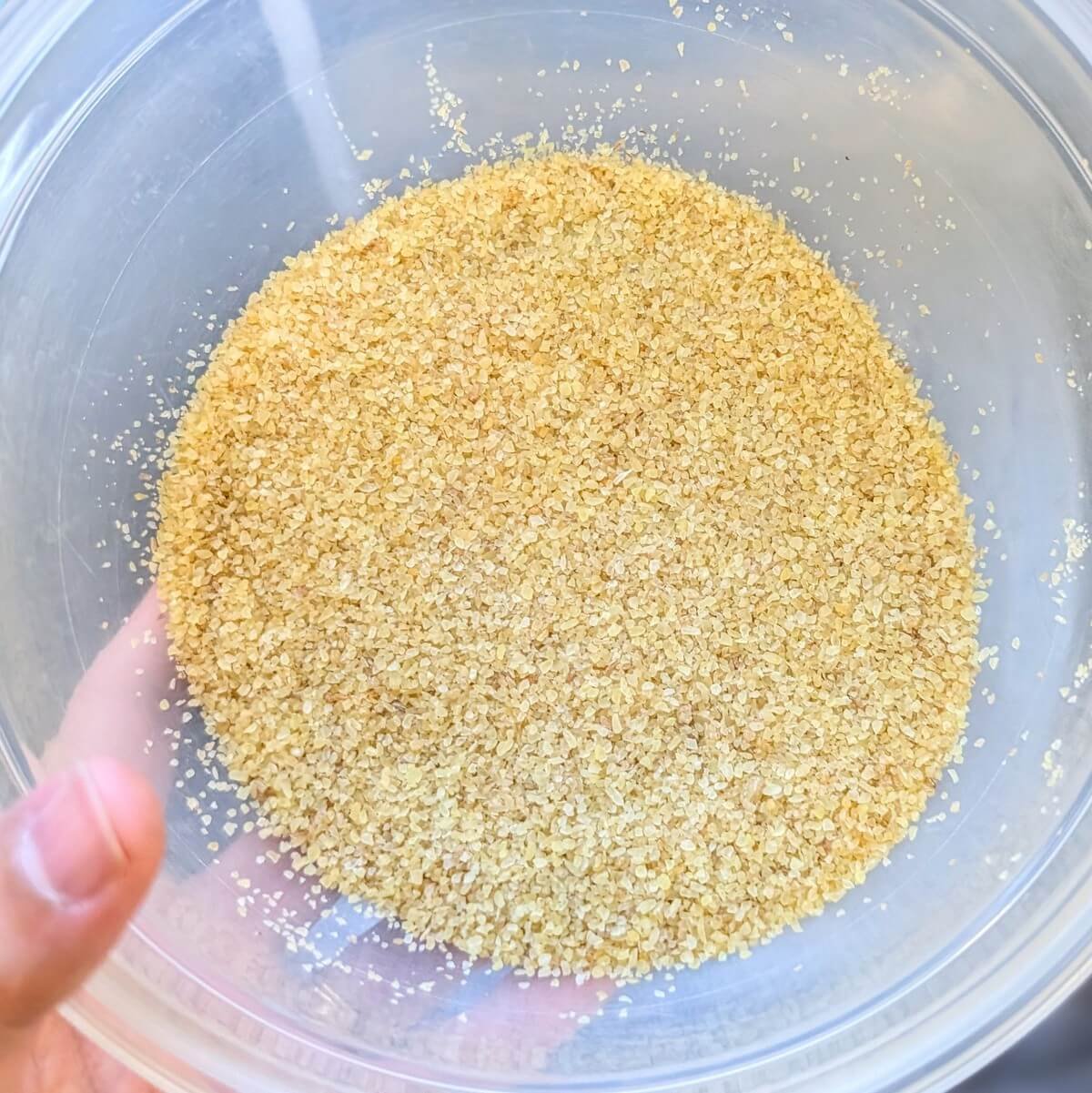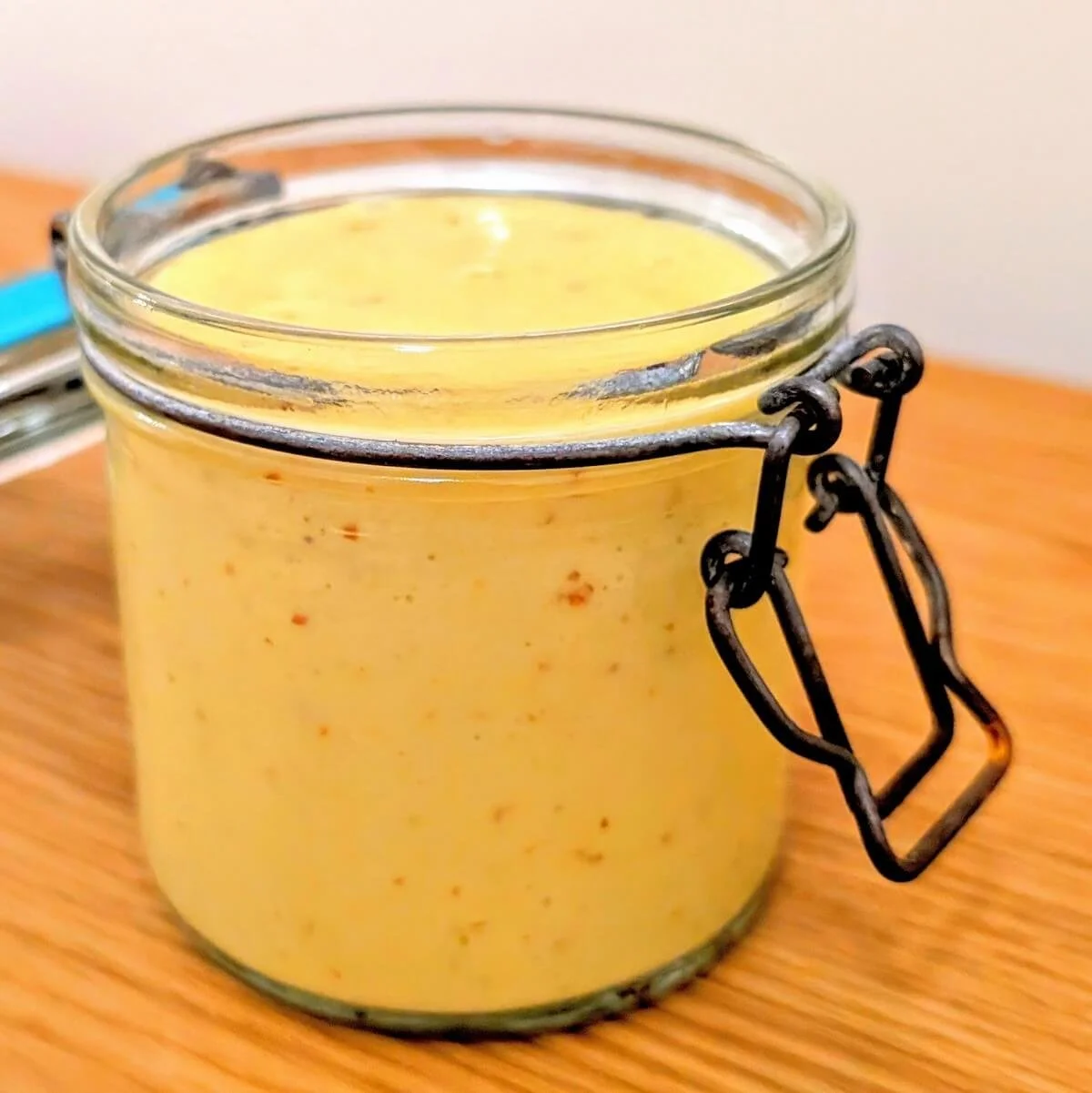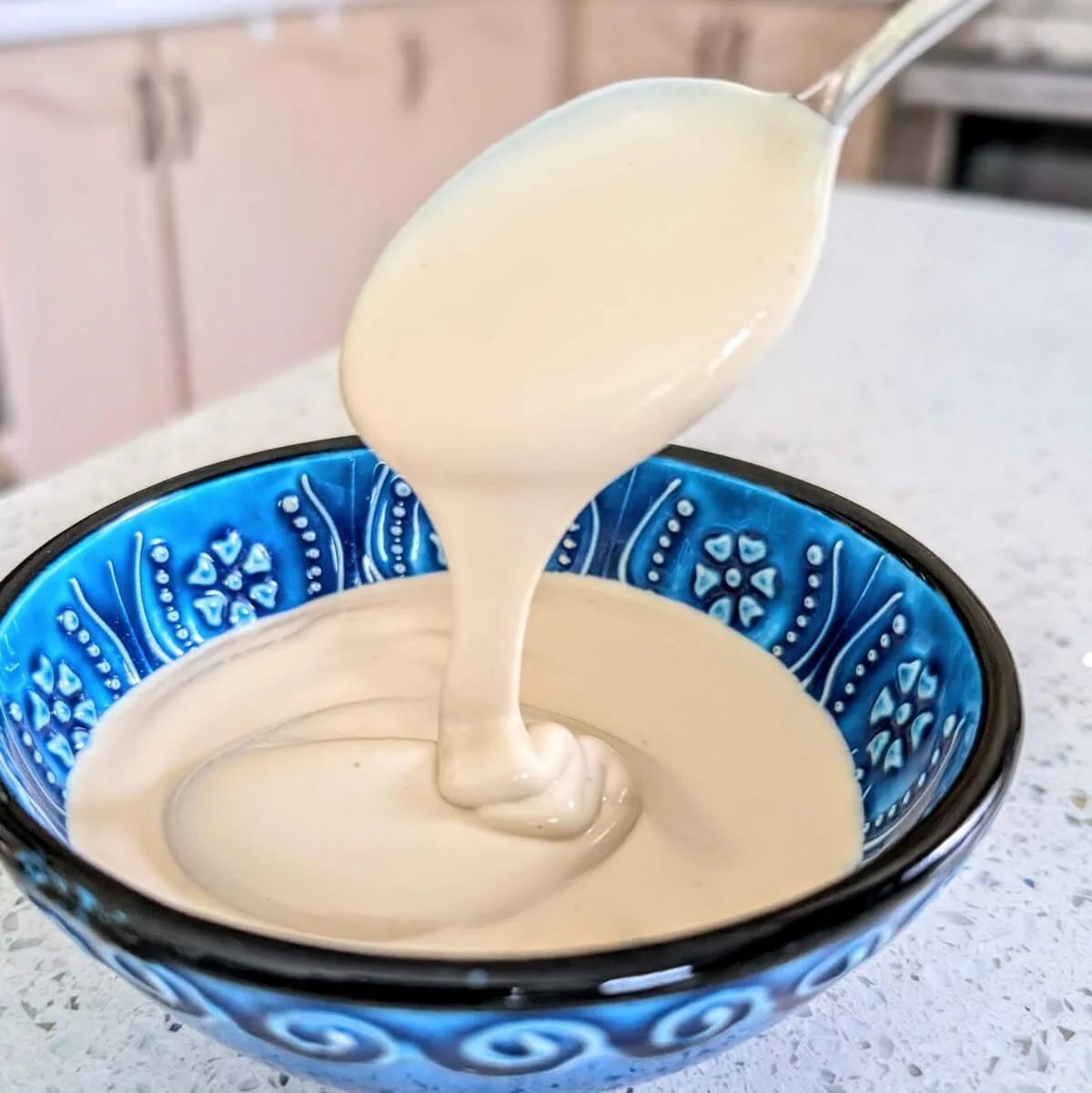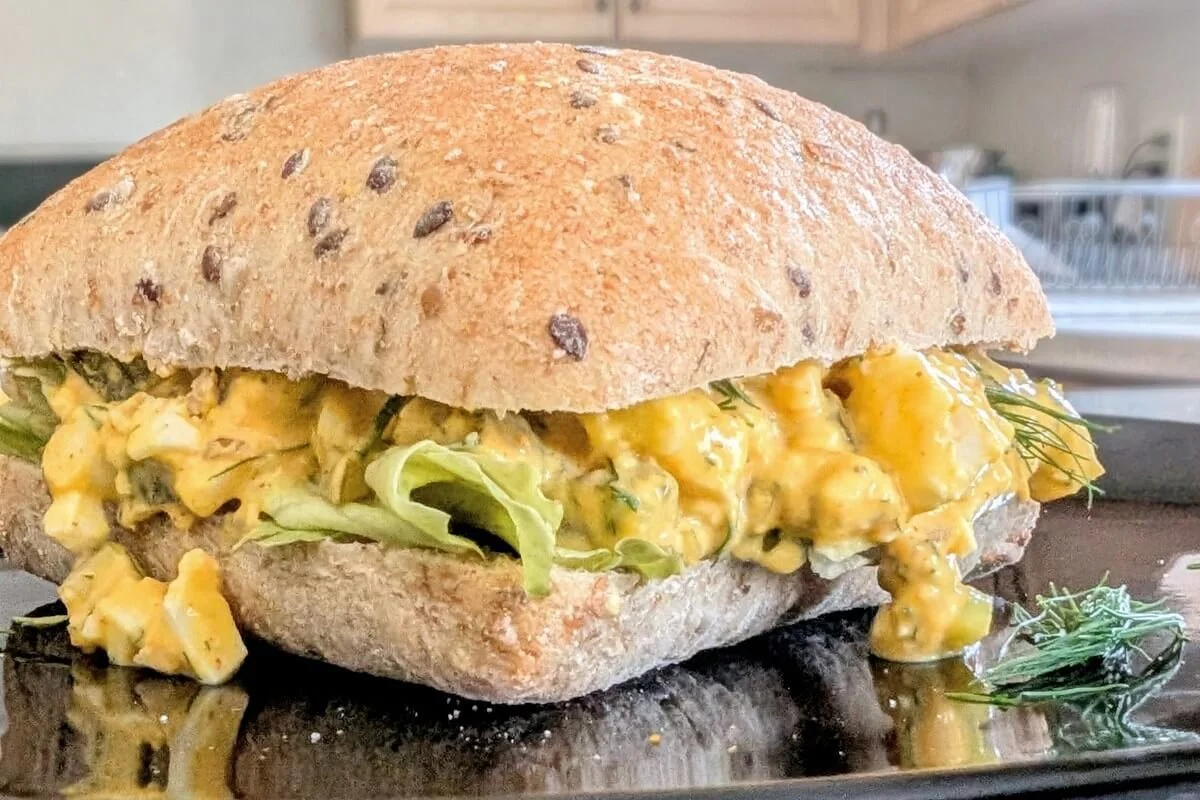Authentic Tabbouleh Salad with Flat-Leaf Parsley and Bulgur
This herb-forward tabbouleh recipe is lemony, light, and made the traditional way with flat-leaf parsley and just a touch of bulgur.
or read on for step-by-step instructions with photos
Traditional Tabbouleh is All About the Parsley
Flat-leaf parsley is the real star in authentic tabbouleh. This is a parsley salad—not a bulgur salad. Too often, I see versions overloaded with bulgur or made with curly parsley, which lacks the nuanced, lemony-peppery depth of flat-leaf.
For the best flavor and texture, we’ll use plenty of flat-leaf parsley, with a little tomato, green onion, and just enough bulgur for contrast. The simple tabbouleh dressing—made with just olive oil and fresh lemon juice—ties it all together perfectly. Once combined, these humble ingredients transform into something truly special, making this hands-down one of my favorite salads of all time.
Why You’ll Love This Authentic Tabbouleh Salad
Parsley-forward and bright: This is a herb salad first, with just enough fine bulgur for texture. Flat-leaf parsley brings a lemony, peppery depth that curly parsley can’t match.
Simple ingredients: No mint, no cucumber, no extras—just a few fresh staples that keep the flavor clean and balanced.
Great for make-ahead: It holds up beautifully in the fridge for up to 3 days and tastes even better after a rest.
What’s Ahead in This Simple Tabbouleh Recipe
Pro Tips: How to balance the flavor and avoid sogginess.
Substitutions: Options for different grains or add-ins that won’t stray too far from the original recipe.
Storage: Tips for storing, making it ahead, and how to refresh leftovers on day two or three.
Serving Ideas: Fun ways to serve it on mezze platters, add it to chicken shawarma plates, or repurpose leftovers.
FAQs: I’ll answer your top questions—like the best way to chop parsley and which type of bulgur wheat works best.
But first, I’ll walk you through this easy tabbouleh recipe step-by-step, so it looks and tastes like the real deal.
Let’s get chopping!
What You’ll Need for This Tabbouleh Recipe
Tabbouleh Salad Ingredients
2 bunches flat-leaf parsley, washed and dried
¼ cup fine bulgur (#1)
1 plum tomato, finely chopped
½ bunch green onion, finely chopped
¼ cup lemon juice
3 tablespoons extra virgin olive oil
1 teaspoon salt, or to taste
¼ teaspoon ground black pepper, or to taste
Equipment for Homemade Tabbouleh
Knife and cutting board
Mixing bowl and spoon
Bowl and strainer (for soaking the bulgur)
Salad spinner or tea towel (for drying parsley)
Citrus juicer (optional)
Makes: 3 to 4 cups
Serves: 2 to 4 Prep: 15 min
How to Make Tabbouleh
Step-by-Step with Photos
Step 1: Soak the bulgur wheat
Place the fine bulgur (#1 grind) in a bowl and cover it with warm tap water—no need to boil, as long as you’re using the finest grind. Let it soak for 10 to 15 minutes while you prep the rest of the ingredients.
Step 2: Finely chop the tabbouleh ingredients
Wash the parsley and dry it really well using a salad spinner or a clean tea towel. Trim off just the thick stems—keep the tender ones—then stack and finely chop the leaves. Dice the tomato and green onion, and toss everything into a large mixing bowl.
Step 3: Strain the bulgur and mix the salad
Drain the bulgur in a fine mesh sieve, pressing it gently to get out as much liquid as you can. Add it to the bowl with the parsley, tomato, and green onion. Drizzle in the lemon juice and olive oil, then season with salt and pepper. Mix well, and taste to adjust the seasoning as needed.
Step 4: Rest, then serve the tabbouleh
Cover and let the salad rest for 15 to 30 minutes—or up to 24 hours in the fridge—so the flavors can meld. Then serve it as a side, stuff it into wraps, or enjoy it all on its own!
My Tips for the Best Tabbouleh Salad
Thoroughly dry the parsley: Any extra moisture will water down the flavor and texture. Use a salad spinner or tea towel to get the parsley really dry before chopping.
Chop the parsley by hand: Skip the food processor—it bruises the leaves and chops them unevenly. Hand-chopping gives you a cleaner flavor and better texture for a fresh salad like this.
Keep the tender parsley stems: No need to strip every leaf. Just remove the thick stems and keep the tender ones—they add flavor and a little bit of texture.
Chop everything finely: Finely chopped ingredients blend better and create the perfect tabbouleh salad texture. It should be cohesive, not chunky.
Season to taste: Taste as you go, adjusting with more lemon, salt, and pepper. I usually add extra lemon juice for a bright, zippy finish. Trust your instincts, taste often, and only stop when it’s just right.
Tabbouleh Ingredient Swaps and Additions
Parsley: Flat-leaf parsley is non-negotiable—it’s the heart of any authentic tabbouleh salad. I would avoid curly parsley, as it doesn’t have the same lemon-pepper brightness as flat-leaf and can taste a little bland, grassy, or even bitter.
If you want to experiment with more herbs, a small amount of fresh mint or dill can be added for extra dimension—both are traditional in many versions.
Bulgur: Fine bulgur (#1 grind) is traditional and gives the salad its signature look and texture. If you can’t find it, swap in a small amount of cooked quinoa or couscous. Just keep it minimal—this is a parsley salad, not a grain salad.
Onion: Green onion adds a gentle bite without overwhelming the other flavors. Finely chopped red onion or shallot can work as a substitute in smaller amounts.
Lemon juice: Lime juice works in a pinch but adds a different citrus note. Avoid vinegar as it can throw off the balance.
Extra add-ins: Some traditional recipes include a little chopped cucumber or a few pomegranate seeds for texture and color. If you add extras, keep them light—just enough to complement the parsley, not overshadow it.
How to Store Leftover Tabbouleh
Fridge: Store leftover tabbouleh in an airtight container in the fridge for up to 3 days.
To refresh: Before serving leftover salad, give it a quick stir and taste. Add a squeeze of lemon or a pinch of salt if needed. If the salad seems watery, strain it briefly in a fine mesh sieve.
Can I make tabbouleh salad in advance?
Yes—tabbouleh is even better after a few hours in the fridge. You can make it ahead the night before or in the morning, and it’ll be ready to go by mealtime.
How to keep tabbouleh from getting soggy?
Make sure the parsley is completely dry before chopping, and fully drain the bulgur after soaking. If it seems watery the next day, just strain it again and reseason if needed.
What to Serve with Tabbouleh
Shawarma plates: I served my tabbouleh as part of a Middle Eastern-inspired dinner with homemade oven-roasted chicken shawarma, roasted veggies, bulgur pilaf, jajik (Iraqi yogurt cucumber sauce), tahini sauce, and pickled red onions (plate pictured below). It brought everything together beautifully—such a fun and flavorful meal!
Mezze spread: Tabbouleh fits perfectly into a mezze platter alongside hummus, baba ganoush, zhoug herb dip, stuffed grape leaves, marinated olives, and pickled veggies. It’s an easy, crowd-pleasing addition to any spread.
Barbecue side dish: Serve this salad with grilled meats like ground beef kebabs, flank steak, lamb roast, BBQ ribs, basket-grilled cod, or chicken skewers. It makes a great contrast to smoky, rich flavors.
Stuff it into wraps: Add it to warm pita stuffed with a white bean spread and crispy falafel, grilled halloumi, or roasted eggplant. It brings freshness and crunch to any sandwich.
Build a grain bowl: Layer tabbouleh into a grain bowl with quinoa, couscous, or rice, plus marinated green beans, hard-boiled eggs, and a drizzle of tahini or lemon dressing for an easy lunch.
Repurpose leftovers: Fold it into a frittata, toss it into a lemony shrimp pasta, or mix it into potato or egg salad for a herb-forward twist.
Tabbouleh Salad FAQs
What is the best bulgur for tabbouleh?
The best bulgur for tabbouleh is fine grind #1. It mixes easily into the salad and doesn’t overpower the parsley with too much texture.
Does bulgur need to be cooked for tabbouleh?
No, fine bulgur doesn’t need to be cooked. Just soak it in warm water until it softens slightly. Cooking it will make it too plump and soft—it should still have a bit of a bite to give that authentic tabbouleh texture. If you’re using a coarser grind of bulgur, a brief cook might be necessary to soften it a touch.
Should you soak bulgur in lemon juice or water?
While some recipes call for soaking the bulgur in lemon juice, I recommend using warm water. It gives you more control over the final flavor—you can mix in the lemon juice later and adjust to taste. Warm water also softens the bulgur more effectively, giving it a perfectly tender texture with just a bit of bite.
Is flat leaf or curly parsley better for tabbouleh?
The best parsley for tabbouleh is flat-leaf. It has a nuanced, lemony-peppery flavor that’s perfect for this salad. Curly parsley is milder and can taste grassy or bitter—it’s better used as a garnish rather than the star ingredient.
Do you use parsley stems in tabbouleh?
Yes, you can (and should!) use parsley stems in tabbouleh. Just remove the thick ones and chop the tender stems along with the leaves—they add flavor and texture.
What’s the best way to chop parsley for tabbouleh?
To chop parsley for tabbouleh:
Stack the parsley leaves with tender stems and gently roll them into a tight bunch.
Hold the bunch firmly and slice across with a sharp chef’s knife, making thin cuts.
Tuck your fingers and move your hand back as you go.
Do one gentle pass with the knife at the end to break up any large pieces. Don’t over-do it—too much chopping causes bruising that dulls the parsley’s flavor and color.
What’s the difference between tabouli and tabbouleh?
There’s no difference between tabouli and tabbouleh—they’re just two ways to spell the same Middle Eastern parsley and bulgur salad.
That’s it—enjoy your fresh tabbouleh salad!
We had ours with my homemade chicken shawarma, and it was the perfect pairing. The tabbouleh’s lemony and herb-forward flavor cuts through the warm spices and brings the whole plate to life.
If you’ve never tried shawarma at home, give my easy oven-baked chicken shawarma thighs recipe a try—it’s simple, full of flavor, and makes amazing leftovers.
No matter how you serve it, this might just become your new favorite salad. It’s bright, fresh, and so easy to love—plus, you’ll get pretty great at chopping parsley too!
Pin this Tabbouleh Salad Recipe for Later!
Traditional Tabbouleh Salad Recipe
A parsley-forward salad with fresh lemon juice, tomato, green onion, and just a touch of bulgur.
Makes: 3 to 4 cups
Serves: 2 to 4 Prep: 15 min
Dietary Notes: Dairy-free, Egg-free, Vegan, Vegetarian, Low-carb
Tabbouleh Ingredients
2 bunches flat-leaf parsley, washed and dried
¼ cup fine bulgur (#1)
1 plum tomato, finely chopped
½ bunch green onion, finely chopped
¼ cup lemon juice
3 tablespoons extra virgin olive oil
1 teaspoon salt, or to taste
¼ teaspoon ground black pepper, or to taste
How to Make Tabbouleh Salad
Soak the bulgur. Place the fine bulgur in a bowl and cover with warm tap water (not boiling). Let it soak for 10–15 minutes while you prep the other ingredients.
Chop the vegetables. Wash and dry the flat-leaf parsley thoroughly using a salad spinner or clean towel. Remove only the thick stems, then finely chop the leaves and tender stems. Finely dice the tomato and green onion. Add everything to a large mixing bowl.
Drain and mix. Strain the soaked bulgur in a fine mesh sieve, pressing to remove excess water. Add to the bowl with the vegetables. Drizzle in olive oil and lemon juice, season with salt and pepper, and toss to combine. Taste and adjust seasoning as needed.
Let it rest. Cover the bowl and let the tabbouleh rest in the fridge for 15–30 minutes, or up to 24 hours, before serving.
Top Tips for the Best Tabbouleh
Dry your parsley really well: Any leftover moisture will water down your tabbouleh. Use a salad spinner or clean tea towel to get it as dry as possible before chopping.
Keep the tender stems: Don’t toss all the parsley stems. Remove the thick ones, but chop the tender stems right along with the leaves—they add flavor and a little texture.
Chop everything finely (by hand!): Skip the food processor—it bruises the parsley, dulling its flavor and texture. Hand-chopping gives you the cleanest results.
How to do it: Stack the parsley with tender stems, roll tightly into a bunch, and slice thinly with a sharp chef’s knife. Tuck your fingers and move your hand back slowly as you chop. Do one light pass at the end to break up any big pieces—no more, or you’ll bruise the leaves.
For more, check out my tips, substitutions, storage tips, serving ideas, and FAQs!
Did you try this easy recipe for tabbouleh?
I’d love to hear how it turned out—or how you made it your own! Drop a comment below, or tag me on Instagram @onecreativecook if you share your creation. I always love seeing what you make!
More Middle Eastern Recipes You’ll Love
Zhoug (spicy Middle Eastern green sauce): If you love a herby green sauce, this one’s for you. It’s garlicky, fresh, and has a spicy kick that pairs beautifully with grilled meats or wraps.
Fresh Arabic chopped salad: Crisp cucumber, tomato, lettuce, peppers, green onion, and herbs tossed in a lemon and olive oil dressing—ultra light and refreshing.
Middle Eastern grilled cod: Flaky, tender cod topped with onions, tomatoes, and tangy tamarind sauce—grilled in a basket so nothing sticks!
Summer grilled lamb roast: Perfect for entertaining, this juicy lamb roast is grilled alongside a medley of veggies for a colorful Middle Eastern-inspired summer feast.
Iraqi chicken soup: This cozy, comforting soup is made with whole pieces of onion, potato, chicken, and chickpeas—no chopping needed. Great for low-energy days or when you’re under the weather.












































